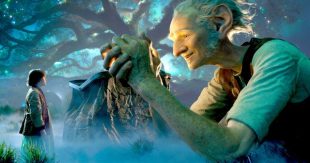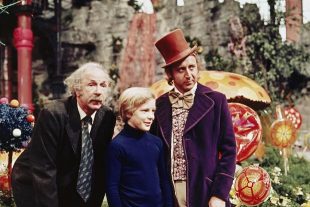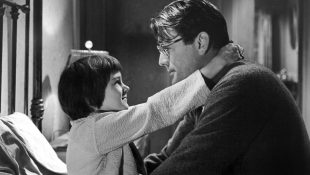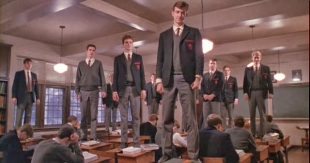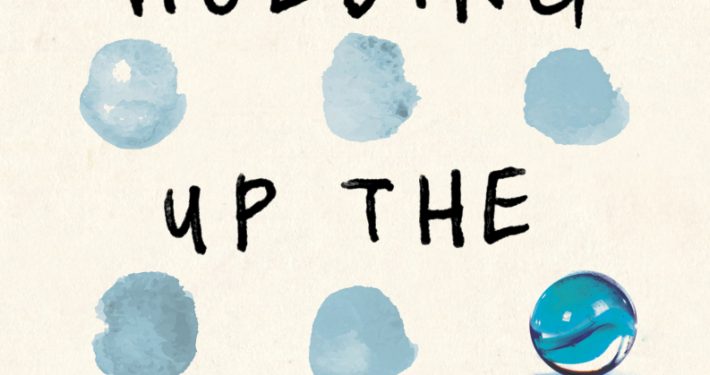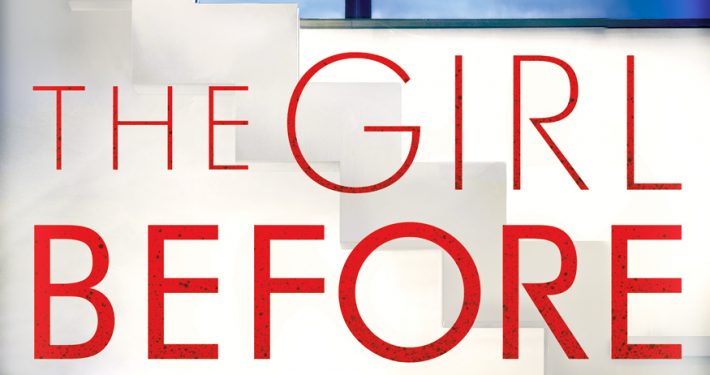My Top Ten Favorite Book to Movie Adaptations
/22 Comments/by Suzanne
Top Ten Tuesday is a fun weekly meme hosted by The Broke and the Bookish. This week’s topic is a All about the Visuals: Top Ten Favorite Graphic Novels/Comics or Ten Comics on My TBR or Top Ten Favorite Picture Books.
This topic was challenging for me as I don’t read graphic novels, picture books, or comics. Instead of skipping this week’s post altogether, I decided to go a bit rogue and do my favorite book to movie adaptations. I don’t know if movies technically count as visuals in the way the prompt intended, but I’m going to pretend they do to suit my purpose. 🙂 Plus, all of these movies are amazing and everyone should watch them anyway! In some instances below, I even prefer the movie to the book and that’s saying something because it’s a rare thing for me to prefer a movie to a book. And I know number 10 is technically a miniseries and not a movie, but it’s just too glorious not to include.
My Top Ten Favorite Book to Movie Adaptations
* * * * *
1. THE PRINCESS BRIDE by William Goldman
* * * * *
2. THE BFG by Roald Dahl
* * * * *
3. CHARLIE AND THE CHOCOLATE FACTORY by Roald Dahl
* * * * *
4. THE HARRY POTTER SERIES by J.K. Rowling
* * * * *
5. TO KILL A MOCKINGBIRD by Harper Lee
* * * * *
6. THE COLOR PURPLE by Alice Walker
* * * * *
7. DEAD POETS SOCIETY by N.H. Kleinbaum
* * * * *
8. LORD OF THE RINGS TRILOGY by J. R. R. Tolkien
* * * * *
9. HIDDEN FIGURES by Margot Lee Shetterly
* * * * *
10. PRIDE AND PREJUDICE by Jane Austen
* * * * *
Question: What are your favorite book to movie adaptations?
Book Review: Holding Up the Universe by Jennifer Niven
/10 Comments/by Suzanne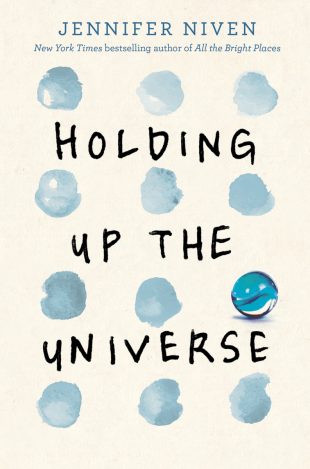 Holding Up the Universe by Jennifer Niven
Holding Up the Universe by Jennifer Niven 
Published by Knopf Books for Young Readers on October 4th 2016
Genres: Contemporary Fiction, Young Adult Fiction
Pages: 391
Source: Purchased
Goodreads
Goodreads Synopsis: From the author of the New York Times bestseller All the Bright Places comes a heart-wrenching story about what it means to see someone—and love someone—for who they truly are.
Everyone thinks they know Libby Strout, the girl once dubbed “America’s Fattest Teen.” But no one’s taken the time to look past her weight to get to know who she really is. Following her mom’s death, she’s been picking up the pieces in the privacy of her home, dealing with her heartbroken father and her own grief. Now, Libby’s ready: for high school, for new friends, for love, and for EVERY POSSIBILITY LIFE HAS TO OFFER. In that moment, I know the part I want to play here at MVB High. I want to be the girl who can do anything.
Everyone thinks they know Jack Masselin, too. Yes, he’s got swagger, but he’s also mastered the impossible art of giving people what they want, of fitting in. What no one knows is that Jack has a newly acquired secret: he can’t recognize faces. Even his own brothers are strangers to him. He’s the guy who can re-engineer and rebuild anything in new and bad-ass ways, but he can’t understand what’s going on with the inner workings of his brain. So he tells himself to play it cool: Be charming. Be hilarious. Don’t get too close to anyone.
Until he meets Libby. When the two get tangled up in a cruel high school game—which lands them in group counseling and community service—Libby and Jack are both pissed, and then surprised. Because the more time they spend together, the less alone they feel. . . . Because sometimes when you meet someone, it changes the world, theirs and yours.
Jennifer Niven delivers another poignant, exhilarating love story about finding that person who sees you for who you are—and seeing them right back.
My Review of Holding Up the Universe:
I read Jennifer Niven’s All the Bright Places last year. It took me on such an emotional roller coaster ride and immediately became one of my all-time favorite reads. Because my opinion of that book is so high, I was a little apprehensive going into Holding Up the Universe because surely there was no way this new book could begin to compete with All the Bright Places in terms of grabbing me by the heartstrings and not letting me go. I’m happy to say, however, that my hesitation was completely unwarranted as Holding Up the Universe is every bit the emotionally poignant read for me that All the Bright Places was. It made me laugh, cry, feel every emotion in between, and it also made me really examine how I view the people around me. Am I really seeing them? Am I putting myself in their shoes and trying to imagine what they might be going through? I love when I can connect with a book on that kind of level and use it for self-reflection.
What I Loved about Holding Up the Universe:
Libby Strout: When Libby Strout, one of the novel’s main characters, is just ten years old, her mother tragically and unexpectedly dies. A grieving Libby feels understandably lost, sinks into depression, and ultimately turns to food as a way to comfort herself. Her lifestyle unfortunately becomes unhealthy for so long that she actually ends up housebound and has to therefore be home-schooled. When Libby’s unhealthy lifestyle ultimately leads to a medical emergency, she literally has to be cut from her house by rescue workers. This event of course ends up captured on video and goes viral on the internet, the end result being that Libby is dubbed “America’s Fattest Teen.” The whole experience is a wake up call for Libby who begins to see a therapist in order to sort herself out and get back on the road to both physical and mental health. When we meet Libby, she has lost enough weight that she feels ready to rejoin the world and so is starting her first day of high school.
I fell in love with Libby immediately. Hell, I didn’t just fall in love with Libby; I wanted to BE Libby because she is just such a rockstar. She’s courageous, resilient, confident, has a wicked sense of humor, and just this all around kickass personality. She knows exactly who she is and she totally OWNS it. Some of her classmates stare and, gawk at her and make juvenile mooing sounds at her when she walks by, but it is not her size that defines who Libby is, it’s her larger than life personality. Libby is not a character that you feel sorry for because she is mocked by her classmates; Libby is a character that you live life to the fullest with and revel in her ‘coming out’, so to speak. If anything, you end up feeling sorry for the losers who mock her because they are the ones missing out on a friendship with a truly remarkable young woman. I really loved that Jennifer Niven painted Libby in such a refreshing way instead of having her be someone that should be pitied throughout the story.
I think my absolute favorite Libby moment in this book is when she decides to try out for the school dance team. The captain of the squad, Caroline Lushamp, has been snide and nasty to Libby ever since she came back to school. Libby gives the audition of her life, because as Libby herself says, “the dance is in me.” This girl has serious moves and her spirit is just so infectious that if you’re with her and she starts dancing, you won’t be able to stop yourself from joining in. When Libby finishes her audition, Caroline immediately starts in with her nasty questions. She wants to know how much Libby weighs and would she be willing to lose over 200 pounds in order to be considered for the team. Libby takes one look at her, says “Absolutely not”, leaves, and promptly starts her own school dance team. Oh, to have had that kind of chutzpah when I was in high school!
Jack Masselin: Jack is the other main character in Holding Up the Universe, and Jack has a secret – he has something called prosopagnosia and, because of it, he cannot recognize the faces of those around him, not even his friends and family. He can literally be sitting there talking to someone and if they look away and then look right back at him, he doesn’t know who they are. He has never been formally diagnosed, so not even his parents realize what is going on with him. He has been hiding his condition since he was a child and has been somewhat successful keeping track of people by memorizing other identifiers about them. But as he has gotten older, he has found himself in more and more awkward and embarrassing situations because of it – once accidently kissing the cousin of his girlfriend because he couldn’t tell the difference between the two girls, and then another time he accidentally flirted with a substitute teacher because he didn’t realize that she wasn’t a fellow student, and so on and so on. His primary coping mechanism has been to develop a certain persona – he constantly plays it cool, tries to laugh the awkward moments off like he has done them intentionally, but ultimately he keeps people at a distance because it’s when they get too close that they start to realize that Jack isn’t as carefree and happy go lucky as he initially comes across.
I really liked Jack’s character because this secret that he is carrying around makes him so complex. I can’t imagine what it would be like to never recognize the faces of those around me and then on top of that, trying to hide it from everyone around me. In some ways Jack frustrated me because of this – I kept thinking ‘Oh my gosh, if you would just tell people, your life would be so much less complicated because people would understand why you do the things you do.’ But at the same time, I could totally understand wanting to not make yourself stand out if at all possible in a world where, as Libby Strout sees every day, some people can be jerks. When a stupid, insulting game called ‘Fat Girl Rodeo’ throws Libby and Jack together, an interesting and very complicated relationship begins to develop between them and Libby quickly begins to see through Jack’s carefully constructed (as he calls it) ‘Super Douche’ persona down to the real Jack, the one he lets no one see.
I liked the contrast between these two characters. Where Libby is all sass and brass, Jack, even with all his attempts at playing it cool, comes across as very vulnerable and in need of someone to basically save him from his own stubbornness about his condition. Libby to the rescue!
Seeing and Being Seen: The major theme of Holding Up the Universe is about seeing – it’s about not only seeing people for who they really are, but also about you yourself really being seen by those around you. It’s about getting past those snap judgments that get made based solely on appearance or by one encounter. I think Niven tackles this theme beautifully with both Libby and Jack. After an initially bumpy start, Jack and Libby eventually come together and a beautiful friendship begins to develop. Even though she actually punches Jack in the face the first time they encounter each other, as they both land in detention/after school therapy and are forced to spend quality time together, Libby quickly begins to see that Jack is not nearly the horrible person she initially thought he was. And Jack, just as quickly, realizes that he feels more comfortable and more himself around Libby than he does around anyone else. Once he realizes he can’t deny this connection he feels to Libby, he drops the doucheboy act and gets as real with her as she has been with him– even confessing the secret about his prosopagnosia to her.
Anything I didn’t like?
Overall I thought this was a fabulous read. I stayed up until well past midnight last night to finish it because I just had to see how it ended. I did have one small quibble with the events of the story though and that was when Jack states that he really could recognize Libby just because he loved her. I’m probably just being nitpicky but it seems like if loving someone is enough to recognize and remember them, then shouldn’t he have been able to recognize and remember his family members? I don’t know. I couldn’t quite wrap my brain around the logic here but it didn’t make me like the book any less than I otherwise would have.
Who Would I Recommend This Book to?
Because of its ultimate message that ‘You Are Wanted’ no matter who you are, what you look like, what size you are, etc., I’d recommend this book to anyone, and especially to anyone who needs to hear that message or who needs to realize the importance of putting oneself in the shoes of another and trying to understand what they may be going through: be a Libby Strout to those around you, don’t be Caroline Lushamp.
Rating: 4 stars

About Jennifer Niven
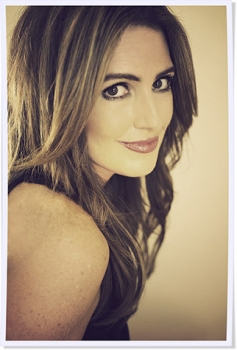
New York Times bestselling author Jennifer Niven has always wanted to be a Charlie’s Angel, but her true passion is writing. Her most recent book, All the Bright Places, is her first novel for young adult readers and tells the story of a girl who learns to live from a boy who intends to die. All the Bright Places was the GoodReads Choice Award for Best Young Adult Fiction of 2015, and named a Best Book of the Year by Time Magazine, NPR, the Guardian, Publisher’s Weekly, YALSA, Barnes & Noble, BuzzFeed, the New York Public Library, and others. It was also the #1 Kids’ Indie Next Book for Winter ’14-’15 and SCIBA’s Young Adult Book of the Year, as well as being nominated for the Carnegie Medal and longlisted for the Guardian Children’s Fiction Prize. As of today, the book has spent over thirty weeks as a New York Times bestseller, and foreign rights have sold to forty territories. The movie rights have been optioned with Elle Fanning attached to star and Jennifer writing the script. As a companion to the book, Jennifer has created Germ, a web magazine for and run by girls (and boys) — high school and beyond — that celebrates beginnings, futures, and all the amazing and agonizing moments in between.
With the publication of her first book, The Ice Master, Jennifer became a Barnes & Noble Discover Great New Writer. A nonfiction account of a deadly Arctic expedition, The Ice Master was released in November 2000 and named one of the top ten nonfiction books of the year by Entertainment Weekly, and translated into multiple languages, including German, French, Italian, Portuguese, Chinese, Danish, and Icelandic. Jennifer and The Ice Master appeared in Newsweek, Entertainment Weekly, Talk, Glamour, The New Yorker, Outside, The New York Times Book Review, The London Daily Mail, The London Times, and Writer’s Digest, among others. Dateline BBC, the Discovery Channel, and the History Channel featured The Ice Master an hour-long documentaries, and the book was the subject of numerous German, Canadian, and British television documentaries. The Ice Master has been nominated for awards by the American Library Association and Book Sense, and received Italy’s esteemed Gambrinus Giuseppe Mazzotti Prize for 2002.
Jennifer’s second book, Ada Blackjack — an inspiring true story of the woman the press called “the female Robinson Crusoe” — has been translated into Chinese, French, and Estonian, was a Book Sense Top Ten Pick, and was named by The Wall Street Journal as one of the Top Five Arctic books.
Her memoir, The Aqua-Net Diaries: Big Hair, Big Dreams, Small Town, was published in February 2010 by Gallery Books, a division of Simon & Schuster, and was optioned by Warner Bros. as a television series.
Her first novel, Velva Jean Learns to Drive (based on her Emmy Award-winning film of the same name), was released July 2009 by Penguin/Plume. It was an Indie Pick for the August 2009 Indie Next List and was also a Costco Book of the Month. The second book in the Velva Jean series, Velva Jean Learns to Fly, was released by Penguin/Plume in August 2011, and the third book in the series, Becoming Clementine, was published in September 2012. The fourth Velva Jean novel, American Blonde, is available now.
With her mother, author Penelope Niven, Jennifer has conducted numerous seminars in writing and addressed audiences around the world. She lives in Los Angeles.
Source: www.jenniferniven.com
Book Review: The Girl Before by J. P. Delaney
/10 Comments/by Suzanne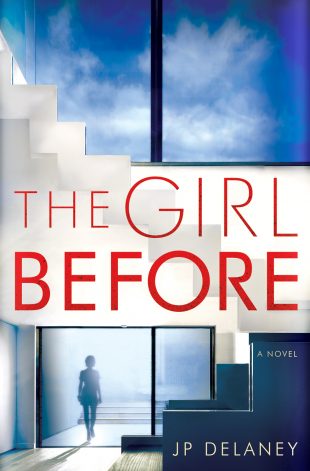 The Girl Before by J.P. Delaney
The Girl Before by J.P. Delaney Also by this author: Believe Me, The Perfect Wife

Published by Ballantine Books on January 24th 2017
Genres: Mystery
Pages: 320
Source: Netgalley
Amazon
Goodreads
FTC Disclosure: I received a complimentary copy of this book from the publisher via Netgalley. All opinions are my own.
Goodreads Synopsis:
Please make a list of every possession you consider essential to your life. The request seems odd, even intrusive—and for the two women who answer, the consequences are devastating.
Emma: Reeling from a traumatic break-in, Emma wants a new place to live. But none of the apartments she sees are affordable or feel safe. Until One Folgate Street. The house is an architectural masterpiece: a minimalist design of pale stone, plate glass, and soaring ceilings. But there are rules. The enigmatic architect who designed the house retains full control: no books, no throw pillows, no photos or clutter or personal effects of any kind. The space is intended to transform its occupant—and it does.
Jane: After a personal tragedy, Jane needs a fresh start. When she finds One Folgate Street she is instantly drawn to the space—and to its aloof but seductive creator. Moving in, Jane soon learns about the untimely death of the home’s previous tenant, a woman similar to Jane in age and appearance. As Jane tries to untangle truth from lies, she unwittingly follows the same patterns, makes the same choices, crosses paths with the same people, and experiences the same terror, as the girl before.
* * * * *
My Review:
The Girl Before is the next big psychological thriller to come along that employs the same ingredients that have made other ‘Girl’ books like Gone Girl and The Girl on the Train so immensely popular in recent years. Central to The Girl Before’s plot are the now familiar concepts of the potentially unreliable narrator that keeps you guessing throughout the novel, supplemented by a cast of characters who aren’t especially likable, and a storyline filled with twists and turns and red herrings as the reader is kept guessing as to whether a tragic event is truly an accident or if it is the result of something more sinister.
What I Liked:
The Dual Narrative Perspective: Even though I have some quibbles about a few other elements of The Girl Before, I did love how the story itself was presented. It alternates between two women, Emma and Jane, who, 3 years apart, live in the same unusual residence, One Folgate Street. The story alternates between their points of view as they live in this house. Both Emma and Jane learn that prior to their moving in to One Folgate Place, someone else has tragically died there. Emma and Jane, in turn, each become obsessed with trying to piece together the circumstances of the deaths because there are so many unanswered questions and so much gossip surrounding each death. In many ways, Emma and Jane’s investigations parallel each other, and I LOVED this, mainly because it just built so much suspense into the story and added so many twists and turns as they follow the various leads they have managed to uncover. It also had me practically screaming at both women because they seemed so hell bent on putting themselves in harm’s way just to satisfy a curiosity. It was maddening and yet so entertaining to read.
The Danger of Obsession: This is a theme that runs throughout The Girl Before and it’s a powerful one. Both Emma and Jane become obsessed with trying to solve these mysterious deaths, in spite of the fact that they may be putting themselves in harm’s way.
You might be asking yourself by this point ‘Why are these women both so hung up on these deaths? Don’t they have anything else more pressing to worry about?’ Well, the basic answer is that during their respective stays at One Folgate House, both Emma and Jane become romantically involved with Edward Monkford. That probably wouldn’t be an issue in and of itself; however, in both deaths, Edward’s name came up as a possible suspect so each lady wanted to know what role, if any, their lover played in the deaths and if they themselves are now in danger because of another added twist: Jane and Emma resemble each other, and both of them bear a striking resemblance to Edward’s dead wife. The man clearly has a type and clearly wants that type living in his perfect house. Edward is basically the embodiment of the ‘dangers of obsession’ theme.
One Folgate Street: One Folgate Street is basically Edward Monkford’s pet project and he is extremely selective about who he allows to live in the residence. The application process is rigorous and asks many probing personal questions, and if an applicant makes it through the initial screening process, which apparently very few do, they then still have to submit to an interview with Monkford before there’s any chance of approval. The house itself comes pre-furnished, although minimally so, and if approved, you are allowed to bring very few things of your own with you, and you also must adhere to the over 200 restrictive covenants that Monkford has in place to mandate and facilitate the minimalist lifestyle he expects his residents to adhere to. Eviction will result from the breaking any of those covenants, which include no pets, no children, and no books, among others (No books? Seriously, what kind of freak doesn’t want any books in their house?!)
I personally couldn’t imagine even wanting to go through the application process to live in this house, much less wanting to live the way this guy demands, but I did find the idea fascinating for storytelling purposes because it got me curious as to the type of person who would want to live there as well as the type of person Monkford is clearly looking for to take part in his little experiment.
The house itself is no ordinary house and in some ways it functions as a character in the story as well. It is always referred to by its name, One Folgate Street. It has also been programmed to employ the use of smart technology in the form of a bracelet and some other diagnostics to recognize its inhabitants and basically perform for them accordingly. If the resident steps into the shower, the water will turn on automatically at the preferred temperature, for example, and that’s just the tip of the iceberg. The house often seems as though it has a mind of its own, which both Emma and Jane occasionally comment on. Periodically throughout the residents’ stay there, the house will basically shut itself down until the resident takes an assessment test and answers more probing questions similar to those in the initial application. Once the test is completed, the resident may continue with life as usual. Emma and Jane each at random times even mention that sometimes they feel like the house is punishing them, especially if they’ve been in a disagreement with Edward. All of that technology in the house adds a creepy Big Brother element to the story. Are they being watched? If so, by whom and why?
Anything I Didn’t Like?
The main thing that somewhat disappointed me about The Girl Before was that I didn’t particularly like any of the characters. As those who follow my reviews know by this point, I really like to be able to connect with the characters I’m reading about and that just didn’t happen for me with Emma or Jane. I just felt like I was only meant to passively observe them in this odd, minimalist habitat rather than truly connect with them in any meaningful way. Maybe that was the author’s intent because of the nature of the story, but that aspect of it didn’t quite work for me.
Speaking of the characters, I also didn’t like the potentially unreliable narrator angle. Not because it wasn’t well done, but just because I’ve seen it in so many books lately. When it started making an appearance here, I actually groaned and said ‘No, not you too. You were doing so well without that.’ I think I’ve just read too many books in this genre in recent years and so what might be a fresh idea for some readers has become a stale one for me.
Who Would I Recommend This Book to?
I’d say if you’re a big fan of books like Gone Girl and The Girl on the Train or are completely new to the psychological thriller genre, you’ll probably love this. I’ve heard that it’s already slated to be made into a movie with Ron Howard directing, so I’ll be curious to see how the movie compares to the book.
Thanks to Netgalley and the publisher for providing me a copy of this book in exchange for an honest review. This does not affect my opinion.
Rating: 3.5 stars

About J.P. Delaney
J. P. Delaney is the pseudonym of a writer who has previously published best-selling fiction under another name. .





